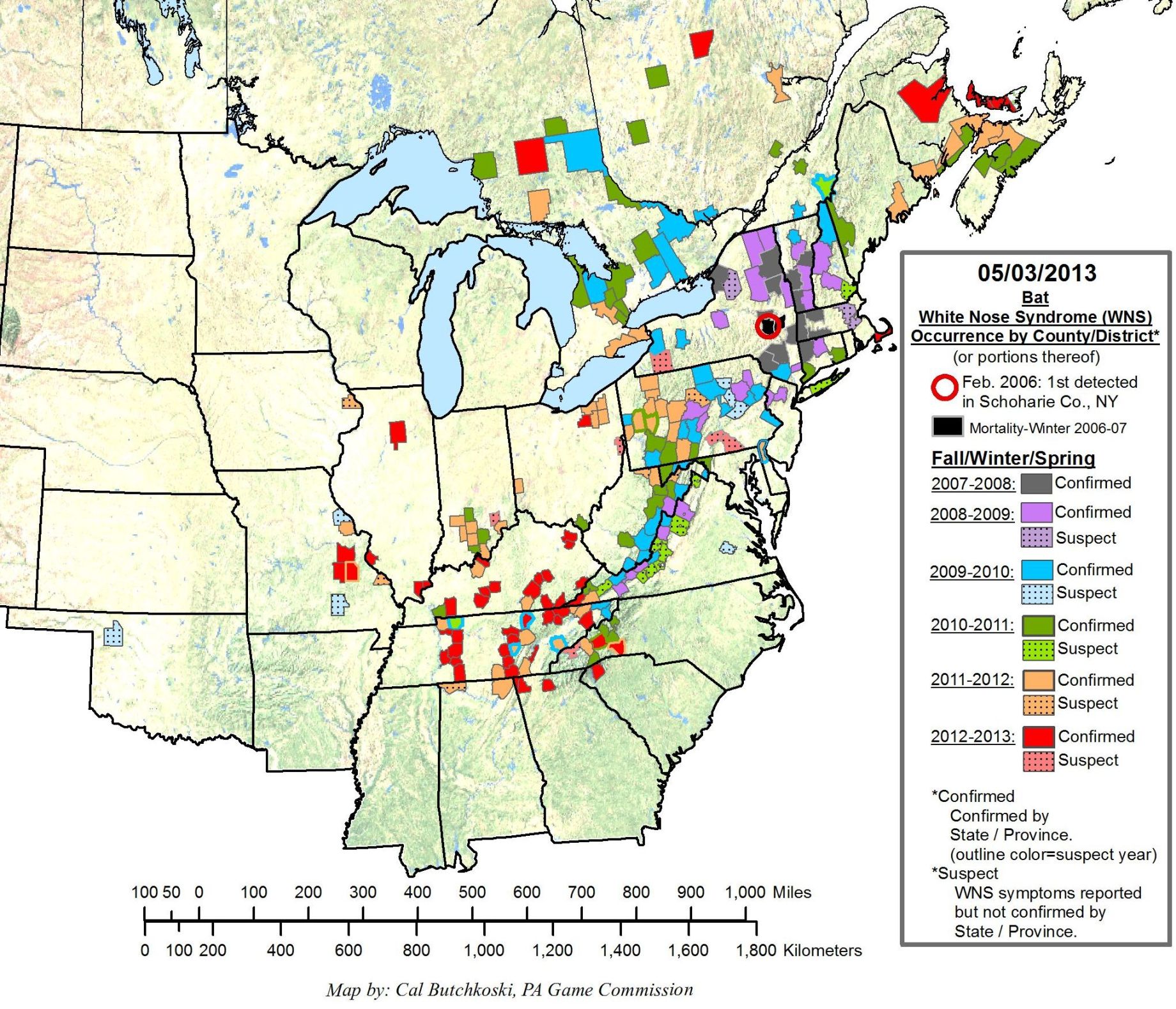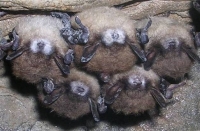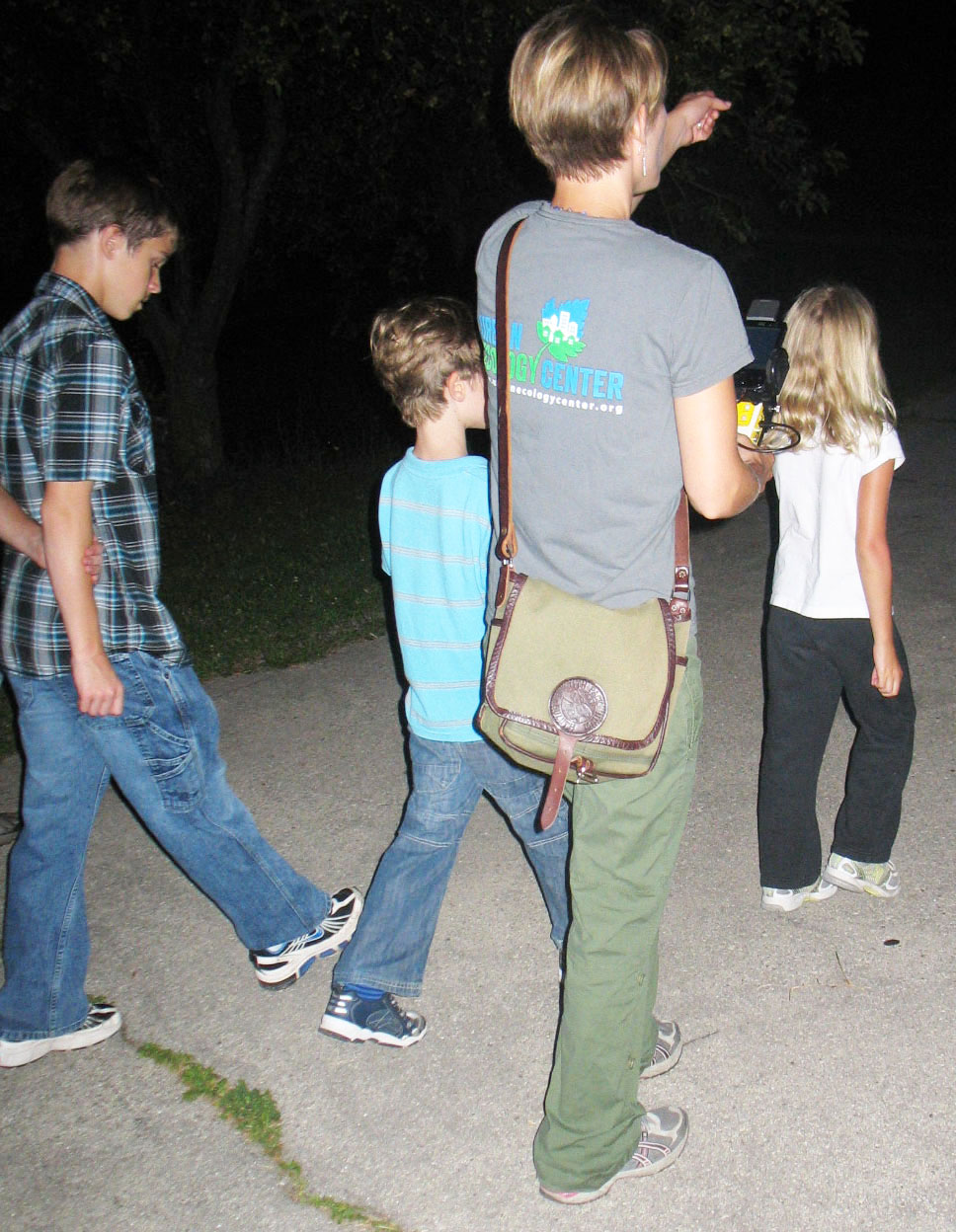 White-nose syndrome has yet to be documented in Wisconsin, but the closest incidences of the disease are nearby in Iowa and Illinois. Wisconsin has four bat species that may be affected in the future, including Big brown bat, Little brown bat, Tricolored bat (aka Eastern pipistrelle) and Northern long-eared bat. During the winter months, numbers of bats hibernating in caves and mines can reach tens of thousands. During hibernation the bat metabolism is low (heart rate is 20 bpm vs 200 bpm active) and the disease can spread from individual to individual very quickly. Symptoms of the disease include a white fungus growing on the nose, wings, ears and/or tail, flying outside of the cave/mine during the day during hibernation period, and clustering near cave entrances. The fungus essentially disrupts the normal hibernation cycle, causing bats to awaken and search for food and water when there are no resources available, using up valuable fat reserves needed for the long winter sleep. The bats ultimately die from starvation, dehydration, and/or exposure.
White-nose syndrome has yet to be documented in Wisconsin, but the closest incidences of the disease are nearby in Iowa and Illinois. Wisconsin has four bat species that may be affected in the future, including Big brown bat, Little brown bat, Tricolored bat (aka Eastern pipistrelle) and Northern long-eared bat. During the winter months, numbers of bats hibernating in caves and mines can reach tens of thousands. During hibernation the bat metabolism is low (heart rate is 20 bpm vs 200 bpm active) and the disease can spread from individual to individual very quickly. Symptoms of the disease include a white fungus growing on the nose, wings, ears and/or tail, flying outside of the cave/mine during the day during hibernation period, and clustering near cave entrances. The fungus essentially disrupts the normal hibernation cycle, causing bats to awaken and search for food and water when there are no resources available, using up valuable fat reserves needed for the long winter sleep. The bats ultimately die from starvation, dehydration, and/or exposure.
This past January, I had the opportunity to help the Wisconsin Department of Natural Resources (WDNR) Bat Program conduct surveys in two of the largest bat hibernacula in Wisconsin to search for evidence of white-nose syndrome. These hibernacula are currently active mines that tens of thousands of bats use to hibernate during the winter. Hibernacula surveys require careful planning and preparation, taking care to decontaminate all equipment that will be used in the mine/cave. The WDNR bat Program surveyed over 70 bat hibernacula this past winter and results regarding the presence of WNS in Wisconsin were just released.
Scientists in the US and Canada are currently researching the dynamics of infection and how to stop of the spread of the disease. The best way for individuals to help Wisconsin’s bats is to stay out of hibernacula to prevent spread of the fungus from clothing or equipment. If you see any unusual bat behavior, please report it to the WDNR, using the bat hotline at 608-266-5216. You can also donate to the Bat Fund Conservation Endowment through the Natural Resources Foundation of Wisconsin to help support long-term bat conservation efforts.
Another way to join in bat conservation efforts is to accompany the Urban Ecology Center’s Community Science Team in mobile bat acoustic monitoring in Milwaukee. We have two bat monitoring workshops scheduled for May: Wednesday, May 8th and Wednesday, May 15th, both from 6:30 to 8:30pm. You’ll learn why bats are important to the ecosystem, which species are present in Wisconsin and how we use acoustic technology to monitor bat species at our branches. We’ll even head out into the parks for an acoustic survey. The data we collect for the WDNR Bat Program provides baseline information on distribution and bat activity during the summer months, all important in assessing the health of our bat populations.
*This article was written with the help of whitenosesyndrome.org and the Wisconsin DNR Bat Program. WNS Photo credit to Bat Conservation Trust.
This post was edited on May 16th, 2013 to protect surveillance protocol information.





